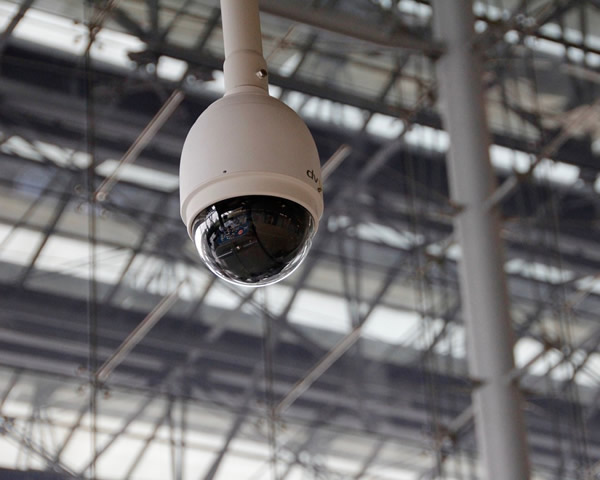A surveillance camera is a camera that keeps going 24/7. It could be wired or wireless and tiny or cumbersome, and it could assume all shapes man can think of. Just because it has a fancy name does not mean it’s entirely difficult to manipulate. The fact is, it is so easy to use, and it’s also easy on your wallet if home and office security are your top priorities.
A surveillance camera can be placed anywhere. You have the choice to hide it inside a desk clock or blatantly mount it on the wall to deter vandals. You can place several of these in different locations and synchronize these to work together. You can watch the recorded images from different locations from a single monitor without any trouble.
The cameras are connected to a single system such as a video or digital recording system, which transmits the recorded images to the monitors. To get a better viewing, go for wide angled cameras which should be positioned without obstructions along the cameras’ range of vision. These recordings can also be permanently saved to your computer’s hard disk for later viewing.
Video Camera Surveillance in the Workplace: The Pros and Cons
It cannot be denied that there are a lot of benefits that can be derived from using video cameras in the workplace. Consider the following:
Pro: It promotes safety and a sense of security.
Video surveillance systems deter theft and burglary and help pin down criminals during the police investigation. It can also protect your employees against false customer accusations and contribute to ensuring that your employees can safely drive in and out of the parking lot without worrying about encountering any criminal elements.
Pro: It increases productivity.
Most employees will be encouraged to work more diligently knowing that their actions are being caught on camera. And when everyone is working as hard as they can, and their collective actions produce the expected results (consider increase sales and/or profits), there is a possibility that they will be given the appropriate salary increase. Wouldn’t that be good for everyone involved?
Pro: It reduces violence in the workplace.
Would employees argue among themselves or commit theft and/or any immoral behavior knowing that there is someone who is watching them? Seriously doubtful.

Source: Pixabay/Public Domain
Pro: It can help in the further development of the business.
The use of surveillance cameras can help you identify who your most reliable customers are and may also serve as a basis for upgrading your customer service standards.
However, the use of such security devices can easily be misconstrued by your employees, so you need to take the utmost care to make sure you don’t infringe on their rights to privacy. To be on the safe side, you should:
– Have a legitimate need to film the premises and your employees’ actions.
– Install your security cameras in public places. Take note that some states such as California and Connecticut prohibit the use of any surveillance equipment in private places (such as restrooms, showers, locker rooms or fitting rooms).
– Make sure that your employees know they are being filmed.
When used correctly, video surveillance systems can help you achieve your business goals so go for it. The common uses of video surveillance systems include employee monitoring, baby or children monitoring, and overseeing dangerous and accident prone areas in your property, such as the swimming pool. However, with the explosion of new and innovative cameras, it becomes quite problematic to pick the one you should get.
Wireless or Cabled
Wireless security kinds provide uncomplicated set-up and installation. They are also simple to hide and to relocate. On the other hand, wired ones may need professional set up and are most suitable for long term situations. The best time for installation of cabled units is during home construction, otherwise there’s a risk of the wires being seen. Due to the fact cabled cameras utilize a house’s typical power system for electricity, they are not subject to interference from other electrical devices like wireless systems tend to be.
Options and Features
You can install a waterproof camera if you are going to install it outside. This type of camera comes in a bullet-like housing to protect it from rain or snow. These are smaller in size and could monitor a range of 10 to 15 feet. The bullet-like one could come built with an LED feature that makes it possible to monitor an area even during total darkness.
It’s also possible to use an in house photographic device by having an outdoor casing to provide more angle and iris choices. A fixed iris will certainly adjust to varying degrees of light, giving much more flexibility than a manual iris, that will need to be realigned. The lens angle will determine whether the high detail of a small area or fewer element of a big area is recorded.
Most of the cameras in the market today can record in both black and white or color. Color recording could capture important visuals such as vehicle and hair color while black and white recording will certainly catch better detail in low levels of light.
Since there are a lot of options to choose from, it is important to take the time to research and study the reasons why you need to install such systems. By taking careful measurements and mapping out the best locations for the cameras, you can be ensured of having the best package available for your needs. Additionally invest time to evaluate the system’s playback and recording capabilities – options include manual functioning, a preprogrammed schedule or through motion sensors.
Sourced from: a1securitycameras
Featured Image Source: Pixabay/Public Domain
